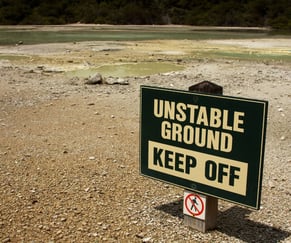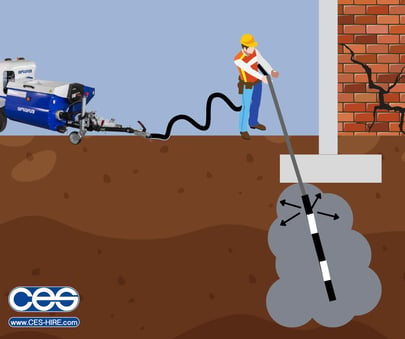Grout Pumps
The Ultimate Guide To Pressure Grouting: Techniques, Benefits And Best Practices
With fast-paced living and tight deadlines, the construction industry can be under pressure to complete projects quickly. Sometimes this can lead building work taking place on unstable ground and such issues being overlooked or ignored in the rush to meet a deadline. This can lead to many more problems further down the line. This is where pressure grouting can really save the day and can stabilise, strengthen and reduce permeability of the ground.
What causes ground instability?
- Sometimes the ground composition is just naturally made up of softer materials or material prone to stability issues.
- Rain and weathering can impact ground stability even creating sinkholes which occur when rain seeps down and loosens the earth
- Human activity such as abandoned mines can also have an effect on the ground
- Errors in construction from civil engineers and foundation contractors

Pressure Grouting Techniques
Pressure grouting (also known as permeation or injection grouting) is a great solution for poor ground stability. This foundation repair technique pumps a cement mixture into the ground. However there is not a single way to carry out this process since it is condition dependent considering the ground composition and whether you are working beneath an existing structure or an empty development space.
Pipes are injected to the lowest elevation into the earth down to the bedrock. The depths the pipes are pushed down will vary depending on the size of the structure/project and the nature of the soil. The cement is then injected under pressure at planned locations through single or multiple port pipes. The pressure will vary from project to project and should be monitored carefully.
As the cement is pumped through the pipes you should watch the pressure gauge between the pump and pipes as well as observe any movement in pre-existing buildings or structures. Once the pressure reaches it's max, the grout pipe is then lifted in five foot increments until about 10 feet from the surface.

The Benefits of Pressure Grouting
Pressure grouting offers a multitude of benefits when it comes to stabilizing groundworks and foundations. Firstly, it causes minimal disruption to the surrounding landscape, nearby structures, and the soil. Unlike alternatives such as concrete piling or the laborious process of removing and replacing concrete, pressure grouting is a much more cost-effective solution. It can even be carried out in areas where access is difficult or space is limited, making it a versatile choice for various construction projects.
One of the key advantages of pressure grouting is its compatibility with different materials and delicate installations. It can be applied next to existing foundations or adjacent to walls, providing strength and support without interrupting facility operations. Furthermore, pressure grouting is a vibration-free process, minimizing the risk of structural damage.
Another noteworthy feature of pressure grouting is its ability to expand and maximize the area of support and ground stabilization. Unlike piled solutions that have a smaller support area, pressure grouting ensures comprehensive and reliable reinforcement. It is also a fast-setting and easy-to-apply technique, making it a convenient option for repairing the foundations of old constructions.
However, caution must be exercised while using pressure grouting to prevent over-pressurization, which can lead to severe damage. To mitigate this risk, it is advisable to fit a pressure gauge to the machine or opt for a more controlled hand-pump approach.
In summary, pressure grouting offers an excellent solution for stabilizing groundworks, reinforcing foundations, and strengthening weakened structures like bridges, walls, and tunnels. Its cost-effectiveness, minimal disruption, versatility, and reliable support make it an invaluable tool in the construction industry.



